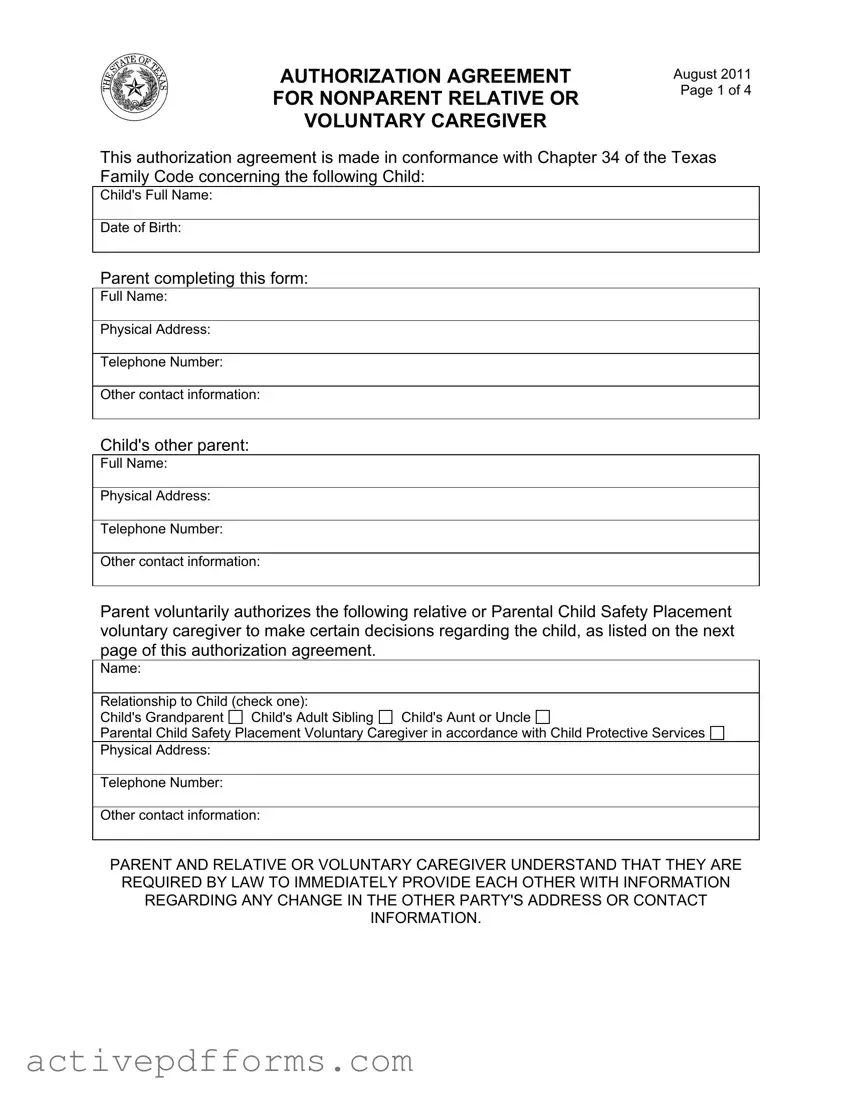Parent authorizes the above named relative or voluntary caregiver to perform the following acts in regard to the child and the relative or voluntary caregiver assumes the responsibility of performing these functions:
(1)To authorize medical, dental, psychological, surgical treatment, and immunization of the child, including executing any consents or authorizations for the release of information as required by law relating to the treatment or immunization;
(2)To obtain and maintain health insurance coverage for the child and automobile insurance coverage for the child, if appropriate;
(3)To enroll the child in a day-care program or public or private preschool, primary or secondary school;
(4)To authorize the child to participate in age-appropriate extracurricular, civic, social, or recreational activities, including athletic activities;
(5)To authorize the child to obtain a learner's permit, driver's license, or state-issued identification card;
(6)To authorize employment of the child; and
(7)To apply for and receive public benefits on behalf of the child.
(8)This authorization agreement does not confer on the relative or voluntary caregiver of the child the right to authorize the performance of an abortion on the child or the administration of emergency contraception to the child
To the best of the parent's and the relative's or voluntary caregiver's knowledge (check if applicable):

 This child is not the subject of a current (pre-existing) valid authorization agreement, and no parent, guardian, custodian, licensed child-placing agency or other agency makes any claim to actual physical possession or care, custody or control of the child that is inconsistent with this authorization agreement.
This child is not the subject of a current (pre-existing) valid authorization agreement, and no parent, guardian, custodian, licensed child-placing agency or other agency makes any claim to actual physical possession or care, custody or control of the child that is inconsistent with this authorization agreement.
To the best of the parent's and the relative's or voluntary caregiver's knowledge (choose one from below):
THERE IS NO COURT INVOLVEMENT WITH THIS CHILD
All of the following statements must apply:
•There is no court order or pending suit affecting the parent-child relationship concerning the child.
•There is no pending litigation in any court concerning custody, possession, or placement of the child or access to or visitation with the child.
•The court does not have continuing jurisdiction concerning the child.
THIS CHILD HAS BEEN THE SUBJECT OF A COURT ACTION
The court with continuing jurisdiction concerning the child has given written approval for the execution of the authorization agreement accompanied by the following information:
•The county in which the court is located;
•The number of the court; and
•The cause number in which the order was issued or the litigation is pending. Please staple a copy of the court's order to this agreement.



 Child's Adult Sibling
Child's Adult Sibling 
 Child's Aunt or Uncle
Child's Aunt or Uncle

 This child is not the subject of a current
This child is not the subject of a current 


